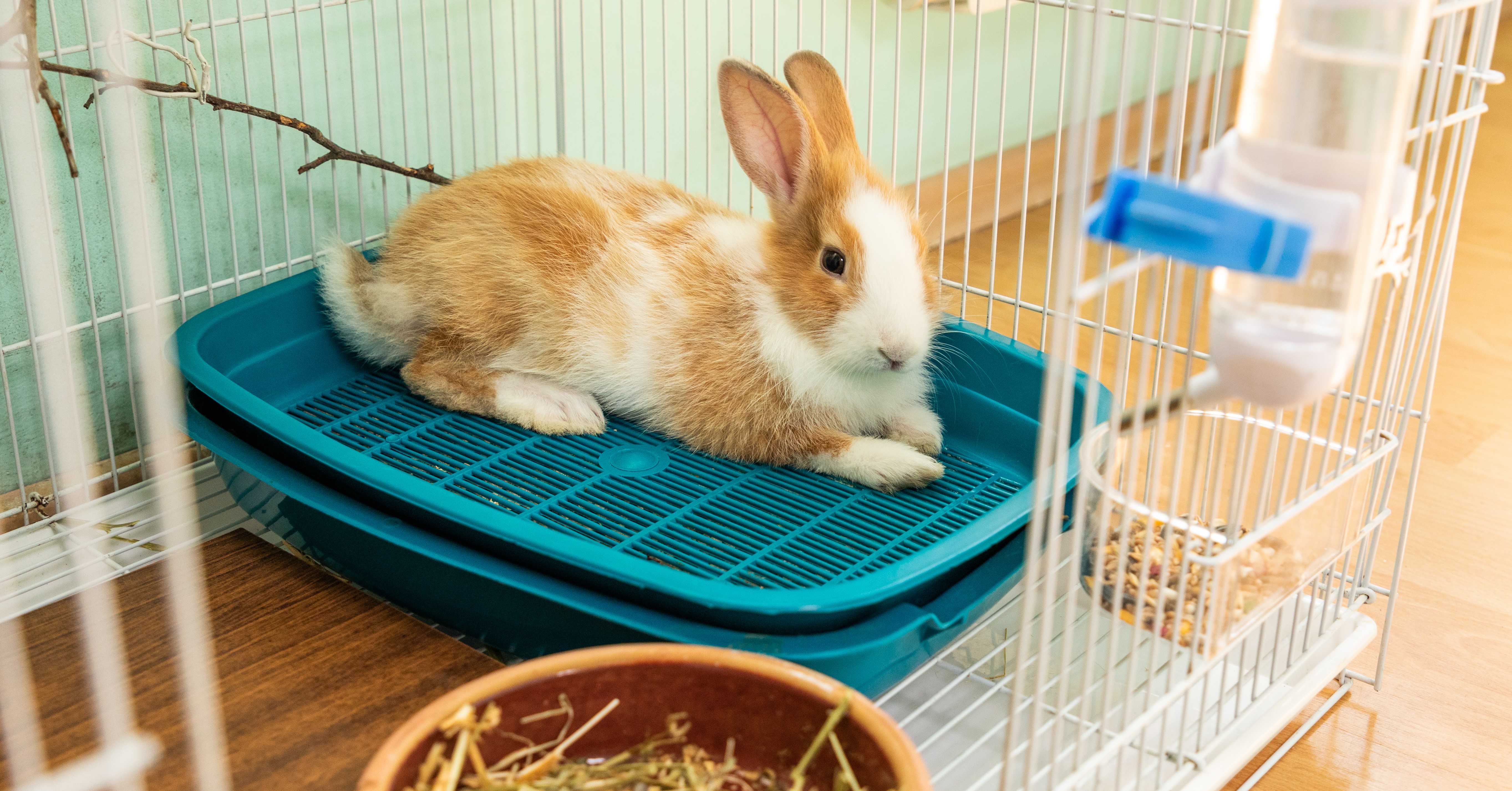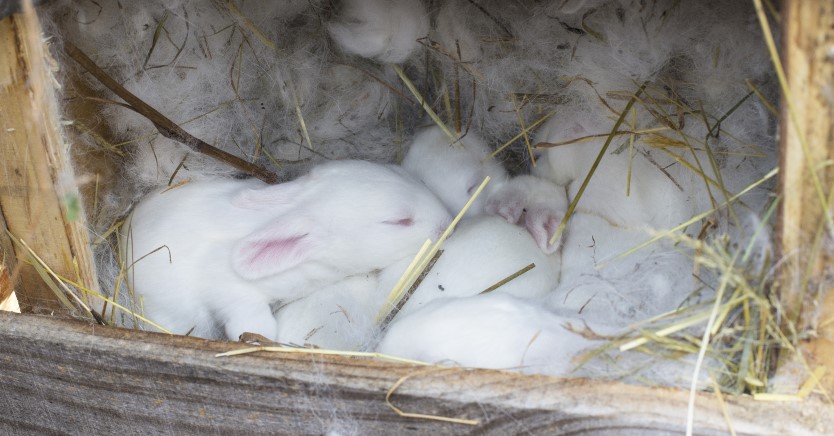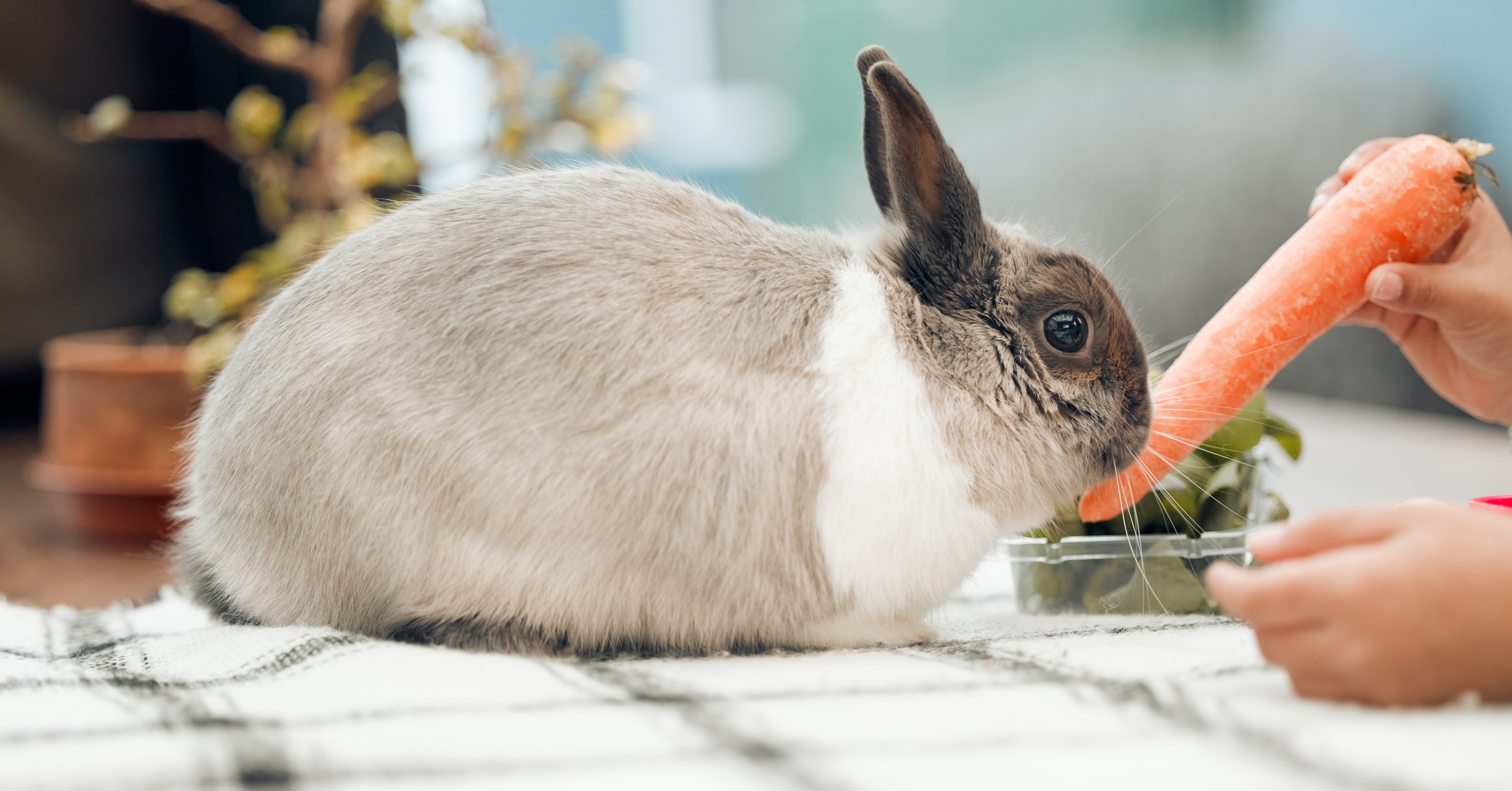How to Litter Train a Pet Rabbit
Litter training a pet rabbit results in less mess, helps owners to better track their pet’s health, and allows pet bunnies to hop around more freely.

Similar to how dogs can be housetrained and cats can be trained to use a litter box, pet rabbits can also be taught to “go” in certain areas. Rabbits tend to naturally go to the bathroom in the corners of their cage or environment. However, providing your rabbit with a designated litter box can make cleanup easier. Litter boxes also provide owners with a simple way to monitor urination and fecal output to determine if their rabbit is sick or in good health.
When to Litter Train a Rabbit
It is often easier to train older rabbits as their attention span and ability to take in knowledge increases as they mature. However, starting the litter training process early on can help your rabbit develop a lifelong habit.
Some baby bunnies are capable of learning how to use a litter box at just a couple of months old. When puberty arrives around three months, the bathroom habits of “teenage” bunnies can become inconsistent. For that reason, it’s best to wait until a rabbit is around four months of age to start litter training.
In addition, your rabbit should be spayed or neutered as soon as possible to aid the litter training process. Rabbits that are fixed are often easier to train and are less likely to spray urine in the house.
What You’ll Need to Litter Train Your Bunny
Training a rabbit to use a litter box is a relatively inexpensive endeavor. You will need a litter pan without a lid, such as the type of box used by cats. You’ll also need litter, such as wood pellets or recycled paper pellets, as well as a large amount of hay, such as Orchard hay or Timothy hay.
When choosing a litter for your pet rabbit, there are certain materials you will want to avoid. Pine and cedar chips or shavings should be avoided as they emit toxic gasses that could be inhaled by the rabbit. Also steer clear of Swheat scoop litter, clay litter, clumping litter, and corn cob litter, all of which could cause harm to your pet rabbit.
Step-by-Step Guide to Litter Training a Rabbit
1. Find a Place for the Litter Box
Start by finding a suitable place for the litter box. If your rabbit is in an enclosure, choose a corner of the space that your pet normally uses as its bathroom. If your bunny free roams, opt for a corner of a room where your rabbit tends to spend most of its time. When your rabbit is first learning how to use a litter box, you may want to have multiple boxes which can increase the likelihood of litter training success.
2. Introduce Your Rabbit to the Litter Box
Your pet may be apprehensive around the litter box at first. Gently place your bunny inside the litter box and allow your pet to explore. Have a few healthy treats available to feed your rabbit for a job well done. This will also help your rabbit associate the litter box with a positive experience.
3. Place Droppings in the Litter Box
A rabbit may not realize the purpose of a litter box right away. One way that you can help your rabbit make the connection is by placing its droppings into the litter box. This will help your rabbit better understand where it should go to the bathroom.
4. Place Hay Next to the Litter Box
While it may seem odd to place food in a place where your pet uses the bathroom, rabbits often enjoy eating while relieving themselves. Place a hay trough where the rabbit can reach it while in the litter box. Replace the hay each day to ensure that your pet always has a fresh supply.
5. Clean Your Bunny’s Litter Box on a Regular Basis
It’s important to keep the litter box clean to prevent odors and encourage your pet to continue using the box. Scoop the litter box at least once per day and perform a deep clean about once a month. The cleaner that you keep the litter box, the more likely your pet is to use it.
6. Find Solutions to Common Problems
You may encounter some problems while training your pet rabbit to use a litter box. For example, your rabbit may choose to use the bathroom outside of the litter box. If you find that your bunny is using a different spot to “go,” move the litter box to that location. Another common problem occurs when rabbits back up in their litter box, causing them to urinate over the edge of the box. You can resolve this issue by using a covered or high-sided litter box or by placing a “urine guard” on the box.
Be Patient and Persistent when Litter Training Your Rabbit
The most important thing to do when litter training a pet rabbit is to be patient. Litter training takes time, and you can’t hurry the process. Do not get upset if your furry friend does not always use the litter box or if training takes longer than normal. Continue to help your rabbit develop a proper bathroom routine, even if that means temporarily keeping your bunny in a smaller enclosure until it starts to use the litter box regularly.
Ready to start saving money on pet wellness care?
Then take a look at Mint Wellness, the pet wellness plan that provides fast reimbursement on routine pet care. Save on vaccinations, wellness exams, preventatives, dental, and more!
Learn More


